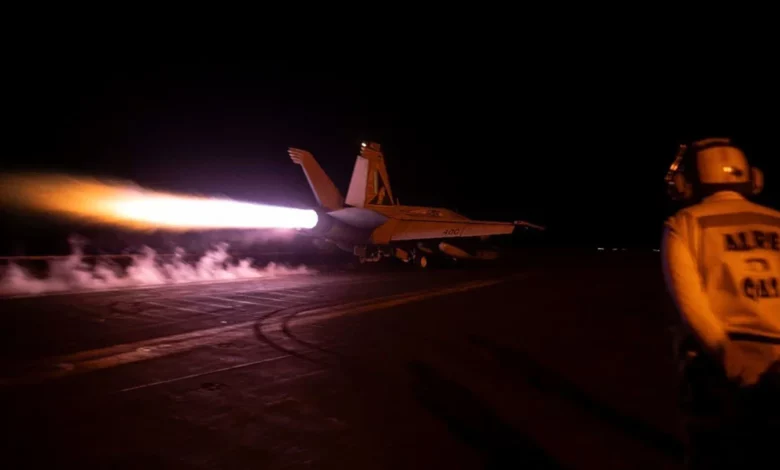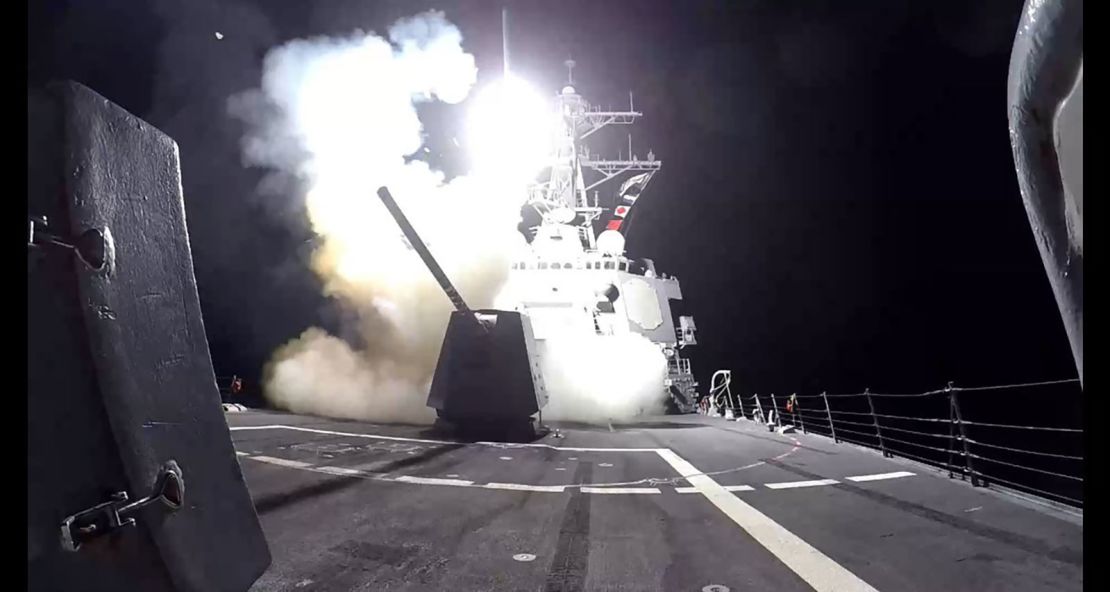
The targets included command and control; an underground weapons storage facility; and other weapons used by the Huthis to target international shipping lanes, one official said.
“Our aim remains to de-escalate tensions and restore stability in the Red Sea but let us reiterate our warning to Huthi leadership: we will not hesitate to continue to defend lives and the free flow of commerce in one of the world’s most critical waterways in the face of continued threats,” the US and UK said in a joint statement with Australia, Bahrain, Canada, Denmark, the Netherlands and New Zealand.
Two US destroyers fired Tomahawk missiles as part of the strikes on Huthi targets in Yemen, a US official told CNN. The USS Gravely and USS Carney, both of which are Arleigh Burke-class guided missile destroyers, fired the land-attack cruise missiles during the operation.
F/A-18 fighter jets from the USS Dwight D. Eisenhower aircraft carrier also took part in the strikes, officials said.
Earlier Saturday, the US struck six Huthi anti-ship cruise missiles before they were launched toward the Red Sea, US Central Command said.
The strikes on consecutive days come as the Biden administration has adopted a “multi-tiered” response to a drone attack that killed three US service members and wounded scores more last weekend.
Seeking to avoid a regional war with Tehran, the US has not targeted Iran directly, instead going after some of its most powerful proxies in the region. It is an indirect way of trying to send a message to Iran’s leadership, which has grown increasingly nervous about the actions of some of the militant organizations it backs, CNN has reported. Iran funds, arms and supplies these groups to different degrees, but its leadership does not control them directly.
The strikes in Yemen are distinct from the attacks in Iraq and Syria: The former is a response to ongoing Huthi attacks on international shipping lanes and US warships in the Red Sea, while the latter is a retaliation for a deadly attack on US troops. But both target Iranian-backed groups in the Middle East.
US Defense Secretary Lloyd Austin said the most recent strikes “are intended to further disrupt and degrade the capabilities” of the Huthi militia.
“This collective action sends a clear message to the Huthis that they will continue to bear further consequences if they do not end their illegal attacks on international shipping and naval vessels,” Austin said in a statement Saturday. “We will not hesitate to defend lives and the free flow of commerce in one of the world’s most critical waterways.”
President Joe Biden gave the green light for Saturday’s strikes earlier in the week, according to two senior administration officials who stressed to CNN that the US doesn’t want escalation and the strikes are in direct response to the actions by the Huthis.
Biden conceded last month that previous strikes against the Huthis did not deter the rebel group but made clear that the strikes will continue.
Meanwhile, Mohammed Al Bukhaiti, a top member of the Huthi Political Council, said in a statement Saturday, “The US-British coalition’s bombing of a number of Yemeni provinces will not change our position, and we affirm that our military operations against Israel will continue until the crimes of genocide in Gaza are stopped and the siege on its residents is lifted, no matter the sacrifices it costs us.”
On Friday, the US carried out separate, unilateral strikes against four sites in Syria and three in Iraq, hitting more than 85 targets, including command and control centers, intelligence centers and weapons facilities.
“We believe that the strikes were successful,” National Security Council spokesman John Kirby said following the operation.
But the Biden administration vowed there would be further actions taken against Iranian-backed groups in Iraq and Syria.
Austin said in a statement that the US strikes on Friday were “the start of our response.” Neither the White House nor the Pentagon would telegraph exactly when the next stages of the response would play out.

Almost exactly 24 hours after the first US weapons hit their targets in Iraq and Syria, the US carried out more strikes in Yemen.
Saturday’s strikes are the third time in recent weeks the US and UK attacked Huthi targets as part of a joint operation. On January 11, the two militaries struck approximately 30 Huthi sites. Less than two weeks later, the US and UK struck another eight sites.
The previous strikes targeted Huthi weapons storage facilities and radar sites in an attempt to disrupt the ability of the Iran-backed rebel group to attack international shipping lanes in the Red Sea and the Gulf of Aden, some of the world’s most critical waterways.
But the Huthis have remained defiant, vowing after the last round of US-led strikes they are “more determined to confront” what they called the US and UK “aggressors.”
In addition to the larger scale strikes on Huthi targets, the US has carried out smaller attacks on Huthi weaponry. On Friday, US forces struck four Huthi drones that US Central Command says were prepared to launch and posed an “imminent threat” to shipping lanes and US warships. The same day, US forces, including a guided missile destroyer and an F/A-18 fighter jet, shot down a total of eight drones over the Red Sea and the Gulf of Aden.
This story has been updated with additional information.
CNN’s Kaanita Iyer and Priscilla Alvarez contributed to this report.




